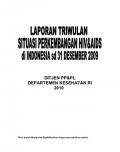What's New
Displaying results 4081 - 4090 of 4924
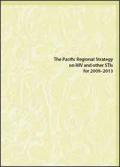
Resource | Publications,
Since the first case of HIV in the region was reported in 1984, there have been various responses at regional and national levels. One major landmark was the endorsement of the Pacific Regional Strategy on HIV and AIDS (2004–2008) by the Pacific Leaders Forum in 2004. The endorsement by the region’s leaders has facilitated the mobilisation of resources to support the strategy’s implementation.
The Pacific Regional Strategy on HIV and other STIs (2009–2013) will build on the successes and strengths of previous work and address some of the challenges in supporting national efforts to prevent and control HIV. Simultaneously, because other STIs are a key risk factor for the transmission of HIV in the Pacific, the strategy will support national efforts to combat them. It will also strengthen work at the regional level through improved coordination, collaboration and partnerships between regional organisations and national programmes.
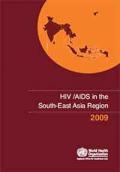
Resource | Publications,
Since the first case of AIDS was reported from Thailand, a quarter of a century ago, the epidemic in the South-East Asia Region has grown massively. Today, HIV has been reported from 10 of 11 countries in the Region. Nearly 3.5 million people are currently living with HIV/AIDS in the Region, and the epidemic is still evolving.
HIV policies and programmes should be based on evidence and firmly rooted in the science of epidemiology. This annual report on “HIV/AIDS in the South-East Asia Region 2009”, presents the current epidemiological situation as well as recent progress in universal access to HIV prevention, care and treatment, based on data reported by Member countries of the Region.
The report highlights that HIV continues to disproportionately affect marginalized populations. Transmission of HIV is fueled by risky sexual and injecting practices and high rates of sexually transmitted infections.While remarkable progress has been made in assuring safe blood transfusion services, expanding testing and counselling facilities and to some extent in scaling-up antiretroviral treatment programmes, there are many shortfalls that need urgent attention.
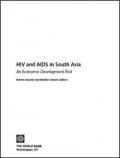
Resource | Publications,
This book offers an original perspective on HIV and AIDS as a development issue in South Asia, a region with a heterogeneous epidemic and estimated national HIV prevalence rates of up to 0.5 percent. The analysis challenges the common perception of HIV and AIDS, which has been shaped to a large extent by analysis of HIV and AIDS in regions with much higher prevalence rates. Three risks to development are associated with HIV and AIDS in the region: First, the risk of escalation of concentrated epidemics. Second, the economic welfare costs. Third, the fiscal costs of scaling up treatment.
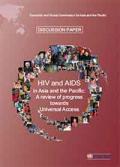
Resource | Publications,
This background paper reviews progress made in the Asian and Pacific region in line with international commitments, with particular attention to the Universal Access targets developed for low and concentrated epidemic countries in Asia and the Pacific through regional and civil society consultations in 2006. Based on these findings, the paper also reviews the main challenges and identifies ways forward in scaling up the response to HIV.
The paper draws on information from the 2008 country reports prepared to measure progress towards the targets set out in the Declaration of Commitment on HIV/AIDS at the United Nations General Assembly Special Session (UNGASS) in 2001. The quality of available data varies and should be considered indicative of progress and trends only. Where appropriate, data is supplemented by information from the UNAIDS 2007 December Epidemic Update and other published sources.
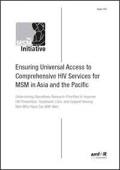
Resource | Publications,
Current statistics likely describe only a fraction of men who have sex with men (MSM) at risk for HIV. There are many more MSM than those who identify as gay or transgender. In Asia, as in many other places in the world, there are men who have sex with both men and women but do not identify as gay or do not associate any particular identity with their sexual behavior. The Asian Epidemic Model estimates that there are 10 million MSM in Asia, some of whom have sex with women or are married. It also predicts that if HIV prevention does not improve from 2007 levels, MSM will soon account for the largest proportion of people living with HIV in Asia. Despite these alarming estimates, rates of HIV infection among MSM in Asia and the Pacific have largely been hidden.
This report summarizes an assessment that was carried out in early 2009 to identify priorities for operations research to better understand effective models for HIV prevention, treatment, care, and support among MSM in Asia and the Pacific.
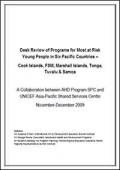
Resource | Publications,
Across the Pacific region, youth population between 10-25 years of age represents about 56% of the pacific population of 9.5 million, with 37% under the age of 14 years. The region's median age is 21 years. UNICEF, UNFPA and SPC jointly supports 10 countries across the Pacific to deliver programs targeting the sexual and reproductive health needs of young people. A 2007 Review of the Adolescent Health and Development (AHD) Program recommended specifically targeting vulnerable, marginalised and most at risk groups of young people. It also noted that specific interventions for this group were inadequate. As a result, the AHD Program is reviewing its strategies to assess the extent to which the MARYP approach has been used, with a view to strengthening program results and outcomes.
The purpose of the assignment, as stated in the Terms of Reference, was to collect information to identify the context, groups and location of Most at Risk Young People in the Pacific and determine the extent to which specific interventions have been implemented to reach this group of young people.
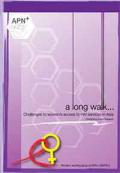
Resource | Publications,
In Asia, HIV prevalence among women and girls is increasing; 40% of HIV-positive young people in south and south-east Asia are women and girls. According to UNESCO, over one million youth between the ages of 15 to 24 in south Asia are infected with HIV, and more than half (62%) are young women. In Cambodia, half of all new infections occur in married women and another one third occurs via vertical transmission from mother to child; since 2006 more women than men in Cambodia are reported to have AIDS. Many women diagnosed as HIV-positive are mothers and it is important to keep them healthy in order to have optimal health and well being outcomes for themselves and their children.
This research study aims to examine the challenges that these increasing numbers of HIV positive
women and children face in getting access to antiretroviral drugs (ARVs) and HIV services in Asia. The study was designed and conducted by women living with HIV in six Asian countries. It was carried out throughout 2008, under the direction of the women’s working group of the Asia Pacific Network of people living with HIV (APN+).
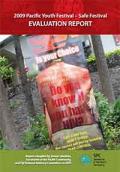
Resource | Publications,
Pacific youth are central to the HIV response in the region. As of 2007, 4,103 new cases of HIV were reported in the region. The majority of these cases were people between the ages of 15 and 29. Even though the number of reported HIV cases is relatively low, other indicators of risk and vulnerability such as STIs are high among youth aged 15 to 24.
Whilst education on sexual health including HIV has improved over the past 10 years, getting young people to recognise their risks for HIV and STI infection and to adopt safe behaviour remains a challenge.
The development of the 2009 Pacific Youth Festival Safe Festival campaign primarily stemmed from lessons learned during the 1st Pacific Youth Festival–Safe Festival Campaign, which resulted in the following recommendations:
• Involvement of the target group at all stages of the campaign – planning, development, implementation, monitoring and evaluation
• Use of the peer to peer approach to disseminate information and products and provide
services and support
• Development of BCC materials that participants wear or use
• Distribution of both male and female condoms
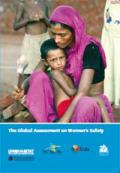
Resource | Publications,
Many women and girls face domestic violence not only in their homes and in relationships, but also in public spaces due to poor choices in urban design and poor management of those spaces. In practical terms this can relate to factors such as inadequate street lighting, unsafe underpasses, ineffective community policing and lack of rehabilitation programmes for those involved in antisocial use of public spaces. During times of conflict or social unrest, those factors can further exacerbate the risk of gender-based violence.
UN-HABITAT takes an active role in the documentation and exchange of best practices and lessons learned to improve safety and security in cities. To this end, UN-HABITAT has collaborated with the Huairou Commission, Women in Cities International and Red Mujer y Habitat to conduct this Global Assessment on Women’s Safety, which is an extensive review of tools and strategies promoting women’s safety on the global, regional, national and local levels. This has resulted in the creation of a database of over 200 institutions, local authorities and grassroots initiatives working on women’s safety. This helps with information sharing and building of global and regional networks.






